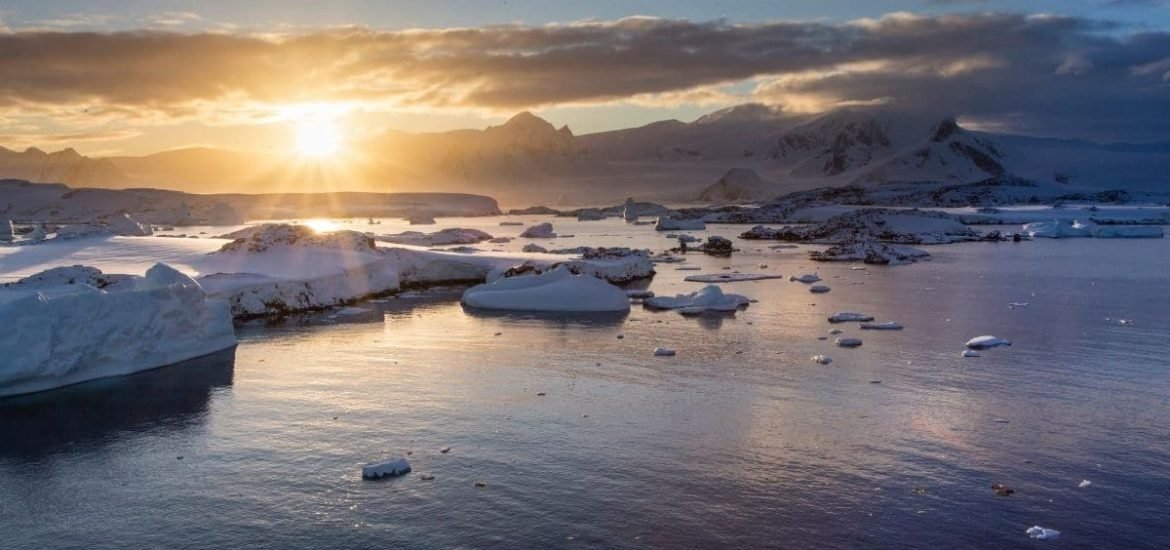
An active leak of methane gas from the seafloor in Antarctica has been discovered for the first time, reported in a new paper published on 22 July in the Proceedings of the Royal Society B: Biological Sciences (1).
The so-called methane seep is releasing methane gas into the ocean from an underground reservoir in the Ross Sea. Scientists say some of it is more than likely escaping into the atmosphere, which could accelerate global warming.
Methane is 25 times more potent than carbon dioxide (CO2) and the second biggest contributor to anthropogenic global warming. Over the past 20 years, global methane emissions have increased by 10 per cent, mainly due to agriculture and fossil fuels. Vast stores of methane remain trapped in permafrost. Thawing of ice in the Arctic and Antarctic regions could release the gas, which climate scientists worry could lead to rapid global warming. Antarctica is estimated to contain as much 25 per cent of the Earth’s marine methane, according to the authors.
Ocean methane is usually consumed by microbes before it can reach the atmosphere, however, the scientists uncovered something fundamentally different about the Antarctic methane seep in the Ross Sea, which was initially discovered in 2011.
“What was really interesting and exciting was that the microbial community did not develop as we would have predicted based on other methane seeps we have studied around the globe,” said co-author Dr Sarah Seabrook, a post-doctoral researcher at the National Institute of Water and Atmospheric Research in New Zealand. The most striking finding is that it has taken microbes five years to populate the area of the methane leak. This slow growth of microbes at the site is concerning, the authors say.
The site is now covered by a 70-metre long patch of white microbial mats – even so, methane is still escaping. This unexpected strain of microbes may need another ten years to adapt and start consuming methane. Moreover, the shallow depth of the site known as Cinder Cones – the site is only 10 metres deep – means the escaping methane is almost certainly findings its way into the atmosphere.
In a statement, first author Dr Andrew Thurber, a marine ecologist at Oregon State University, said: “Methane is the second-most effective gas at warming our atmosphere and the Antarctic has vast reservoirs that are likely to open up as ice sheets retreat due to climate change.”
“This is a significant discovery that can help fill a large hole in our understanding of the methane cycle”. However, Thurber also told The Guardian that the delay in methane consumption is “not good news”. It took more than five years for the microbes to begin to show up and even then there was still methane rapidly escaping from the seafloor.”
Thurber says, “the methane cycle is absolutely something that we as a society need to be concerned about”. Indeed, many scientists are worried about the potential release of huge methane stores in these frozen regions, which could be one of the key tipping points that lead to unstoppable climate change.
The authors did note, however, that the Ross Sea has not warmed significantly, suggesting the release of the gas was not caused by global warming, and the source of the methane remains unknown. In fact, at present, very little is known about the Antarctic methane cycle.
The discovery of the methane leak in Antarctica offers an incredible opportunity for scientists to study a methane seep as it forms, providing “a natural laboratory for further research”. Although for now, scientists will have to wait a little longer to carry out more research as the risk of bringing the coronavirus infection into the virus-free region has halted expedition plans.
(1) Thurber, A.R., Seabrook, S., and Welsh., R.M. Riddles in the cold: Antarctic endemism and microbial succession impact methane cycling in the Southern Ocean. Proceedings of the Royal Society B: Biological Sciences (2020). DOI: 10.1098/rspb.2020.1134